TL;DR
Quick answer: the simplest way to decorate an empty living room corner without plants is to add a tall floor lamp (65–72 inches), re-center the sofa and rug, and use one substantial piece instead of multiple small items. This combo solves the “why does this look off?” feeling and is the best way to decorate an empty living room corner without clutter.
Corner dilemmas are rarely about the corner.
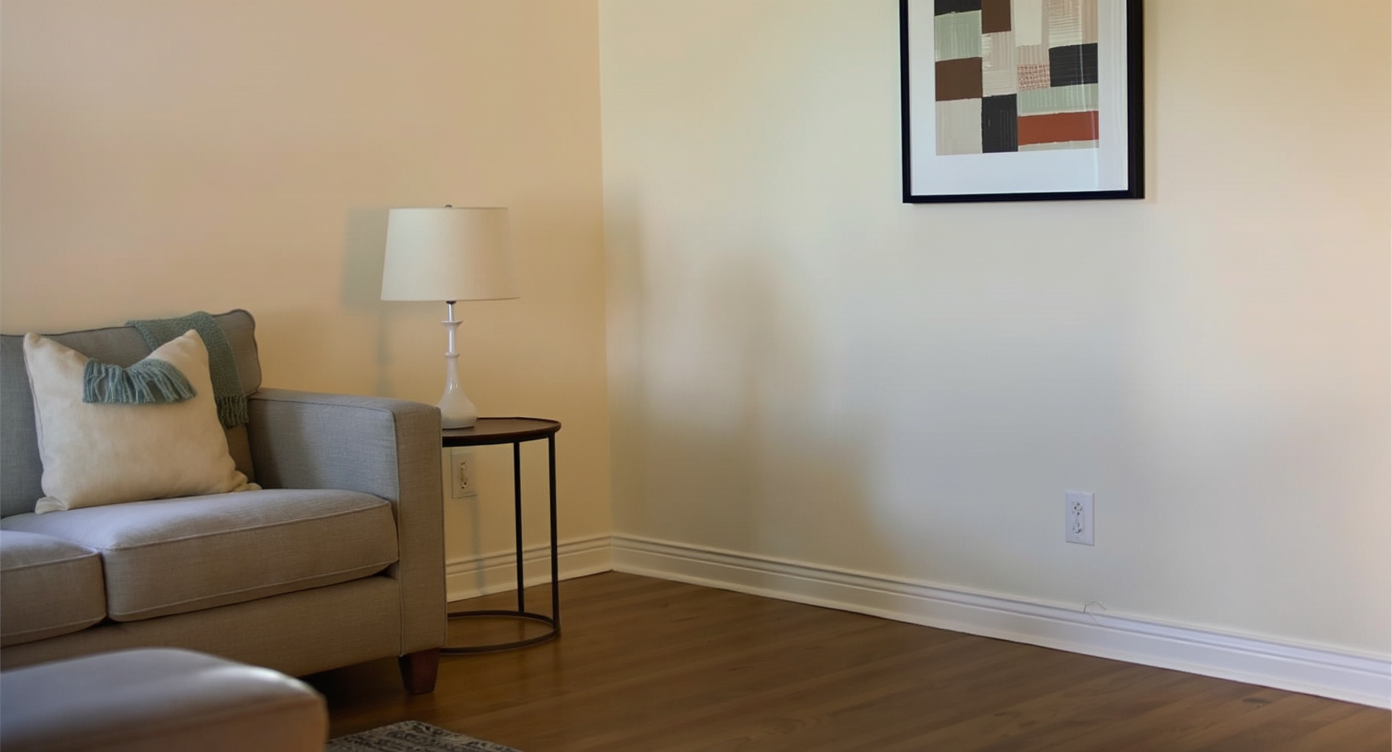
An empty corner often signals visual imbalance from poor scale and placement in your living room layout.
Here’s the thing about an empty living room corner: it usually isn’t empty. It’s full of visual imbalance. The sofa might be pulled too far to one side. The lamp feels small. The art sits just a bit off-center. You can buy more decor, sure, but the better answer is often to fix scale and placement. If you can’t keep a live plant alive because you travel or visit seasonally, you still have options. Think lighting, texture, and height. A single, correctly scaled floor lamp, a blanket ladder, or a sculptural vessel with tall dried branches can do the job of a plant without needing water. Designers often advise starting with layout first, then filling the corner with one large element rather than three small ones.
Core strategy: what to put in a living room corner (when plants aren’t an option)
The fastest, most reliable fix for an empty living room corner is a tall floor lamp paired with a small layout adjustment. Experts recommend lamps between 65 and 72 inches tall with a 12–18 inch shade to feel proportional to a standard sofa. Start with the layout.
- Center the sofa on its wall so the gaps on both sides are roughly equal. Even a 4–8 inch shift can change the whole read of the corner.
- Right-size the rug. A common rule: front legs of seating should sit on the rug by 8–10 inches, with 24–36 inches of walkway where people pass.
- Check the art. The center of wall art typically looks best at 57–60 inches off the floor, or aligned to the sofa centerline, with 3–6 inches of breathing room from shelves.
- Arched floor lamp: An arc that projects 20–40 inches can pull light over the sofa, creating a canopy effect without adding clutter. Keep the lowest point 12–15 inches above head height when seated.
- Tall, lean ladder: A 70–72 inch blanket ladder adds vertical lines and soft texture. Use two throws max to avoid bulk.
- Sculptural vessel with branches: A 24–30 inch floor vase with 48–60 inch dried branches (olive, birch, or dogwood) adds height like a tree, zero maintenance.
- Corner shelf or pedestal: One slender piece (12–14 inch footprint) can display a single object or stack of books. Less is more: one to three items max.
Anecdote
A couple kept adding pictures to a corner and wondered why it felt busy. They took everything down, centered the sofa, and added one 70-inch floor lamp. The room exhaled, and they finally used that spot for reading.
Common mistakes people make with living room corners
Small scale and over-decorating are the usual culprits. Designers often advise choosing one large piece instead of three small ones to avoid visual clutter in a living room corner.
- Tiny lamp, tiny table. A 20-inch table lamp on a petite side table reads “bedroom nightstand,” not “living room anchor.” Size up the lamp or switch to a floor lamp.
- Cluttering the wall. Adding extra shelves or mirrors near existing shelves can feel busy. If wall storage is already on one side, shift it a few inches or lower it; don’t double down with more.
- Ignoring negative space. Not every corner needs filling. If the room already has art and shelving, a single lamp or nothing at all can be the most elegant choice.
- Wrong rug proportions. A too-narrow rug elongates one side and makes the corner feel emptier. Aim for at least 8–10 inches under the front sofa legs.
- Forcing live plants. If you visit only a few times a year, low-water plants still struggle. Choose dried botanicals or a high-quality faux instead.
Pro tips designers use to make corners look intentional
A few small upgrades can make a corner look designed, not improvised. Experts recommend layering ambient, task, and accent lighting so the corner glows, not glares.
- Add a dimmer and timer. A plug-in dimmer and a smart plug on a schedule make the corner feel alive even when you’re away.
- Hide a mini uplight. Tuck a 3–5 watt LED puck behind a vessel, ladder, or faux tree to graze the wall and add depth after sunset.
- Use the rule of thirds. Build a triangular composition: sofa arm height, mid-height lamp body, tallest arc or branches. The eye reads it as complete.
- Mind clearances. Keep 14–18 inches between sofa edge and coffee table, and 24–30 inches for walkways near the corner.
- Upgrade materials. Linen or parchment shades, stone or wood bases, and real moss toppers elevate simple pieces and read “authentic” in photos.
Real-room stories: how people solved the empty-corner problem
These real-world scenarios show what actually works. Designers often note that centering the sofa and scaling up one element solves 80 percent of corner complaints.
- The arc that fixed it: One homeowner swapped a small table lamp for a 70-inch arched floor lamp. By pulling the glow over the sofa, the corner became a reading zone and the whole wall felt centered.
- Faux-plant skeptic converted: After resisting, another client tried a 7-foot faux olive in a heavy pot with real moss. Guests assumed it was real, and the room finally had height without maintenance.
- Mirror misstep avoided: A family planned a wide mirror below floating shelves, but it competed with the shelving. Lowering the shelves slightly and leaving the wall below open made the space calmer and more cohesive.
- Round table, softer room: Swapping a rectangular coffee table for a 36–40 inch round wood table softened angles and let them nudge the sofa left, instantly balancing the corner.
Visualization Scenario
Picture evening light drifting under a linen shade. The sofa is centered, the rug edges align with the front legs, and a single arched lamp sweeps overhead. A soft throw hangs on a slim ladder, and a small uplight washes the clay wall. Nothing shouts. Everything hums.
FAQ
How should I decorate an empty living room corner without plants?
Use a tall floor lamp (65–72 inches), a blanket ladder, or a sculptural vase with 48–60 inch dried branches. One substantial piece prevents clutter and gives the living room corner a focal point.
What size floor lamp works best in a living room corner?
Most rooms look balanced with floor lamps 65–72 inches tall and shades 12–18 inches wide. For arched lamps, keep 12–15 inches of head clearance above seated height.
Should I center my sofa to fix an awkward corner?
Yes. Centering the sofa on the wall and adjusting the rug so front legs sit on it by 8–10 inches restores symmetry and reduces the corner’s visual weight.
How do I choose a faux plant that looks real?
Pick a 6–7 foot style with wired stems, varied leaf sizes, and a matte finish, then drop it into a heavy planter topped with real moss. One realistic faux plant beats several small decor items.
What’s the best way to light a living room corner?
Layer lighting: a warm 2700–3000K bulb in a dimmable floor lamp for ambient light, plus a small uplight to graze the wall. This creates depth without glare.
Bring it home
If your living room corner feels empty, don’t start by shopping; start by centering. Square up the sofa and rug, correct the art height, then add one substantial element such as a tall floor lamp, a lean ladder, or a sculptural vessel with branches. Keep the palette consistent, the lighting warm, and the objects few. The corner’s job isn’t to shout; it’s to steady the room. Want to preview options before you buy? Mock up multiple layouts and lighting styles in minutes with ReimagineHome, then save the look you love.
.svg)

.svg)

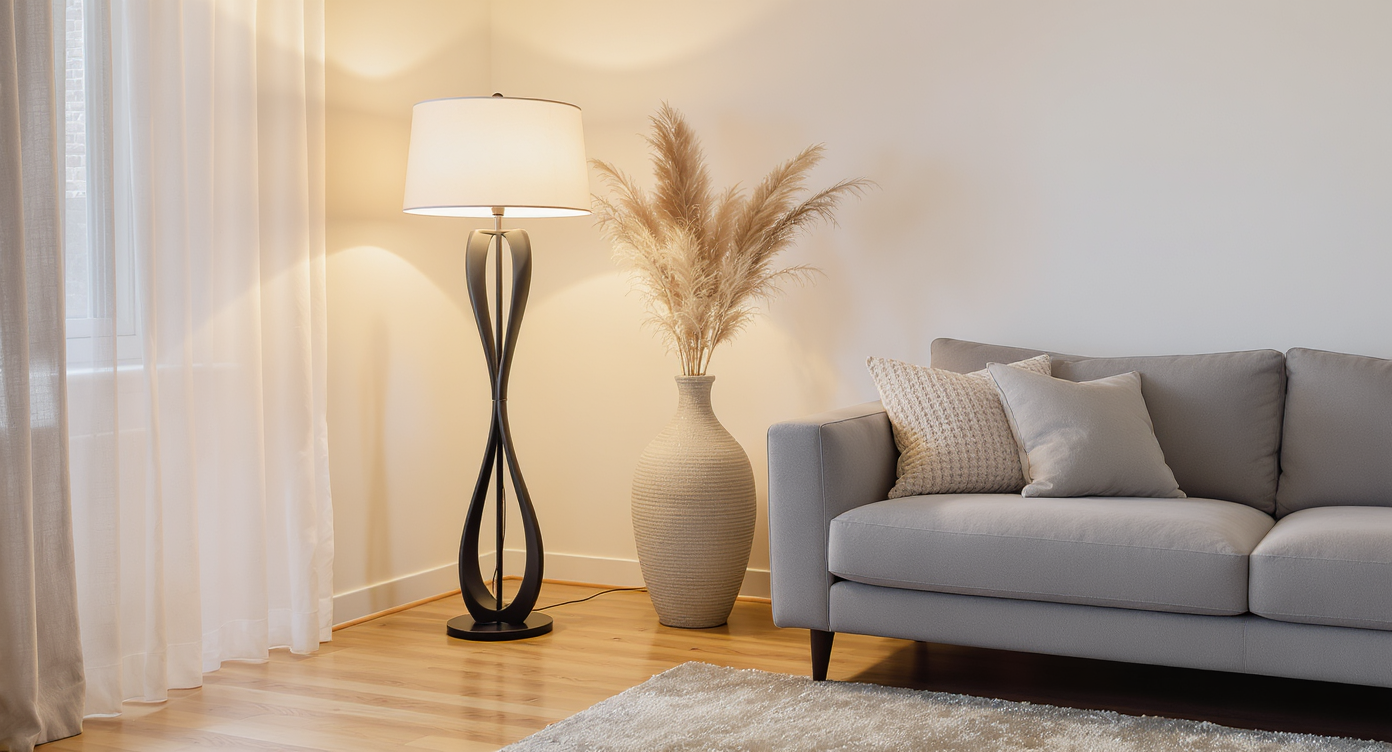
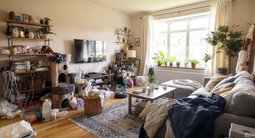

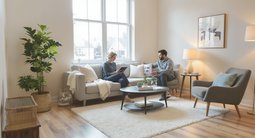
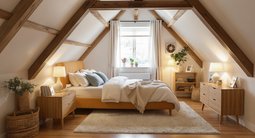
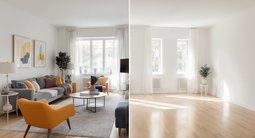
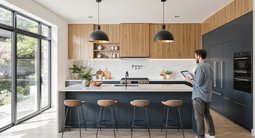
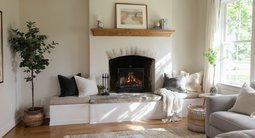

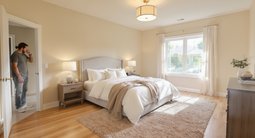
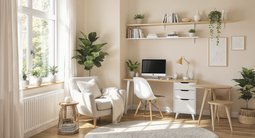


.png)